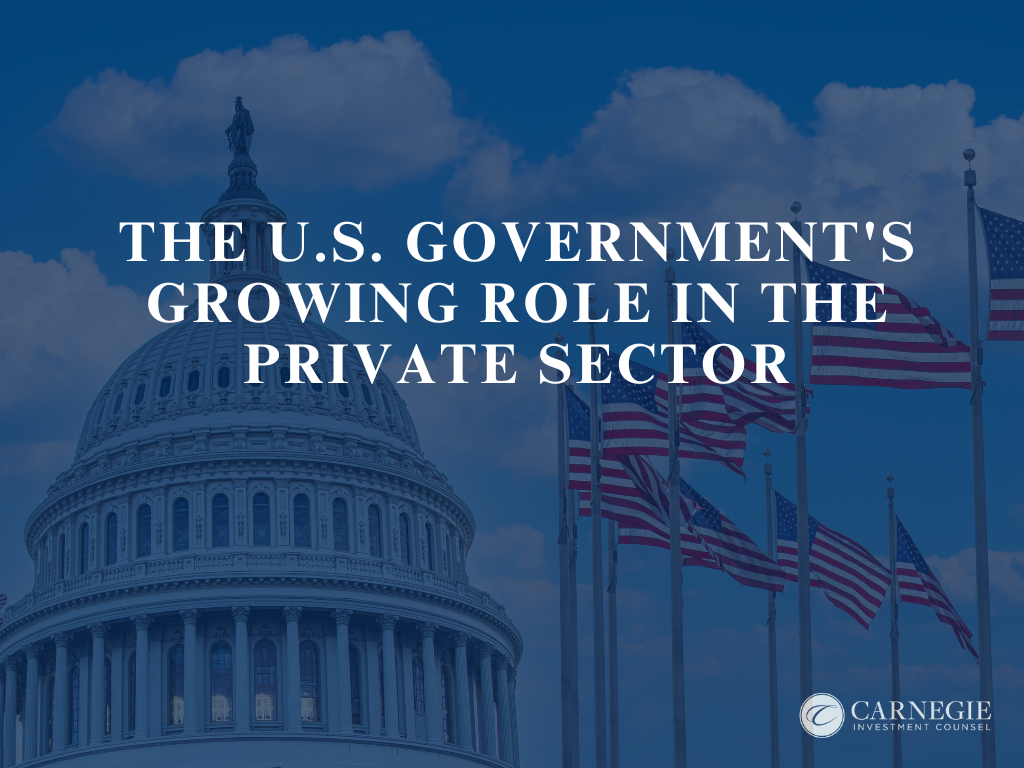The idea of the U.S. government taking direct ownership stakes in private companies felt largely anathema to the nation's capitalist ideals. Yet, the current administration is increasingly embracing a more active role in the private sector. This isn't about regulation or tax incentives; it's about direct investment and influence, echoing—but diverging from—past interventions.

A New Chapter in Government Investment
Recent moves by the U.S. government signal a shift in philosophy:
- Intel's $8.9 Billion Infusion: In a landmark move, the U.S. government announced an $8.9 billion investment in Intel in August. This is a strategic investment that will give the government a roughly 10% stake in the semiconductor giant. Of this, $5.7 billion will come from previously awarded but unpaid grants under the CHIPS Act, with an additional $3.2 billion from a program focused on secure chip manufacturing.
- A Slice of Chip Sales: Beyond Intel, the government is reportedly looking to take a 15% share of NVIDIA and Advanced Micro Devices chip sales to China. By allowing some chip sales to China (i.e. the less powerful chips), this move aims to ensure that China’s Artificial Intelligence ecosystem remains dependent on U.S. technology while extracting a “toll” for the transaction.
- Securing Rare Earths with MP Materials: The Pentagon has purchased a $400 million equity stake in MP Materials, a rare-earth miner. This investment directly addresses national security concerns regarding crucial supply chains.
- The "Golden Share" in U.S. Steel: As part of the deal allowing Nippon Steel to acquire U.S. Steel, the U.S. government secured a "golden share." While non-economic, this gives the U.S. government board representation and veto power over critical decisions, such as closing U.S. Steel plants, ensuring domestic production continues.
- Defense Contractors on the Horizon? There are active discussions about taking stakes in defense contractors. Given that most of their revenue comes from the government, proponents argue this could prevent price gouging and ensure their priorities align with national security interests. However, critics worry it could stifle innovation, create conflicts of interest, and lead to the government favoring one contractor over another. Historically, the U.S. has relied on competition within the private sector to drive innovation and keep costs in check.
Precedents from the Great Financial Crisis
While seemingly new, this active government role isn't without precedent. The Great Financial Crisis (GFC) of 2008 saw the government step in drastically to prevent a complete economic meltdown.
- Auto Industry Bailout: General Motors (GM) and Chrysler received emergency loans and financial assistance through the Troubled Asset Relief Program (TARP). The U.S. Treasury became a majority shareholder in GM and a minority shareholder in Chrysler. This gave the government a direct hand in their restructuring, including plant closures and labor negotiations, guiding them through a managed bankruptcy. The goal was to prevent an uncontrolled collapse that potentially threatened the entire U.S. economy. The government gradually sold its stakes, fully exiting Chrysler by 2011 and GM by 2013, though with a net loss on the auto bailout of approximately $12.1 billion.
- Bank and AIG Bailout: The government injected capital into banks by purchasing preferred, non-voting stock. This provided vital capital while also giving the government warrants—the right to buy common stock—to potentially profit from recovery. For AIG, deemed an even greater systemic threat, the government took a nearly 92% ownership share to stabilize the insurer. Unlike the auto bailout, the bank and AIG interventions ultimately saw a net gain for taxpayers, with the bank Capital Purchase Program generating a $16 billion profit.
A Different Motivation
The key difference between the GFC interventions and today's actions lies in their motivation:
- GFC: The bailouts of GM, Chrysler, banks, and AIG were reactive measures to distressed companies on the verge of collapse, whose failure threatened the entire U.S. economy.
- Current Actions: Intel, MP Materials, NVIDIA, and defense contractors are generally not distressed companies facing imminent collapse. While Intel has faced some financial challenges with negative free cash flow, the discussion isn't about averting an economic catastrophe. Instead, these investments are proactive, strategic moves aimed at strengthening critical supply chains, maintaining technological leadership, and enhancing national security in a competitive global landscape.
Historically, supporting vital industries meant loans and tax incentives. The Advanced Technology Vehicles Manufacturing (ATVM) Loan Program, for example, provided Tesla Motors with a $465 million loan in 2010 to develop fuel-efficient vehicles. Similarly, the 2022 CHIPS Act, provided grants, loans, tax credits, and R&D funding. These approaches allow the private sector to operate with less government interference, even if they forgo the potential upside of equity ownership.
The Investor's Dilemma
The growing specter of government involvement introduces new complexities for investors:
- Uncertainty: Direct government involvement adds a third party whose priorities may not solely align with shareholder value. This uncertainty can deter private investment.
- Performance vs. Policy: Even with government investment, there's no guarantee of success. Intel continues to lag Taiwan Semiconductor when it comes to producing the most advanced chips. And as the GM bailout showed, government investment doesn't guarantee positive financial returns.
- Precedent for Intervention: The proposals for NVIDIA and defense contractors are largely unprecedented in their direct intervention into thriving, strategically important companies.
While the U.S. government's more active role in the private sector aims to achieve critical national objectives, the ultimate outcome is uncertain for both the underlying companies and investors. The Intel investment may do little to help the company catch up with Taiwan Semiconductor as high debt and negative cash flow are still a problem. Nvidia exporting chips to China generates revenue for the U.S. but doesn’t prevent Chinese technology companies from advancing their own AI tech. It does prompt a re-evaluation of the balance between government oversight and the free market. The long-term implications for innovation, competition, and investor confidence also remains to be seen.
This commentary is for informational and educational purposes only. Opinions are subject to change.
Carnegie Investment Counsel (“Carnegie”) is a registered investment adviser with the Securities and Exchange Commission. Registration as an investment adviser does not imply a certain level of skill or training. For a more detailed discussion about Carnegie’s investment advisory services and fees, please view our Form ADV and Form CRS by visiting: https://adviserinfo.sec.gov/firm/summary/150488.


